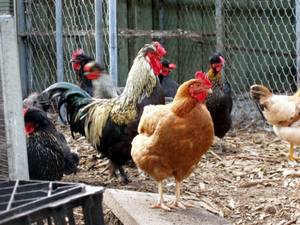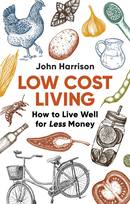Let’s face it. Times are tough and most of us are looking for ways to scrimp and save. The latest money-saving hacks can be found all too commonly on your social media feed, ripe with ideas about how to extreme-coupon, get a second job, generate passive income, and download the latest money-saving app. Inflation continues to raise prices, while most employers refuse to raise pay along with it.
 Rather than a look at the latest money-saving gadgets and gimmicky fixes, this guide is an attempt at more sustainable types of long-term frugality.
Rather than a look at the latest money-saving gadgets and gimmicky fixes, this guide is an attempt at more sustainable types of long-term frugality.
While the Internet is notorious for being a powerful temptress in getting people to buy things they don’t need, it is also a virtual treasure trove of knowledge where one can learn to do, make, or repair almost anything.
1. Before Making a Purchase, Ask Yourself 3 Very Important Questions:
- Do I Need this Product? It seems oversimplified, but if you actually stop and ponder your physical, emotional, and mental needs, sometimes an impulse buy can be recognized for what it is. Many times just making adjustments or repairs to items you already own or making the products yourself is worth the money you will save by abstaining from the purchase. (More on this later…)
- Will this Add Quality to My Life? Think long and hard about how this product will enrich, simplify, or otherwise improve your day-to-day tasks and interactions. Does this improvement justify the cost of the item? In other words, does it offer a good value for the money?
- Is this the best value for this type of product? Oftentimes we yearn for a top-of-the-line model of a given product simply because of the social status associated with buying “the best” brand, when many mid-range products or second-hand alternatives would serve your needs just as well.
2. Choose cost effectiveness over the lowest price when you can.

Living on a Budget
We understand that not everyone has the budget or the storage space to buy everything in bulk to save a few bucks, but it is important to understand value. Have you ever shopped Amazon and noticed the price per count feature? Do that with life.
The equation can be done rather simply on your phone. Take the price of an item divided by the number of units (doses, servings, and so on) in the package. This is your price per count. Some stores will post this information under the price tag on a store shelf, while others will not.
One of the most successful big box retailers in the world, Costco, enjoys massive success today due to a business model based on this. If your short term budget has some flexibility and allows for you to spend more now so you can ultimately save in the long-run, look around to see how you can save by buying in bulk.
3. Look at Self-Sufficiency
There are two major ways you can do this:
1. Raising and Growing Your Own Food
If you have the room and proper zoning to begin homesteading, or raising animals for butchering and /or milk and eggs, consider the pros and cons of that type of lifestyle. If you have a full time job and a lengthy commute and do not want to spend your free hours caring for animals, this probably won’t work for you.

Keeping Chickens at Home
Some types of homesteading are lower-maintenance and easier to do with less space than others. Chickens are good starter animals, because many cities and towns allow residents to keep them in their backyards.
Laying hens are the easiest and most cost-effective food-producers you can get. If you are considering homesteading, we recommend starting here. They only require a small shelter with roosting bars, laying boxes, and a possibly a fence to keep them contained in one area.
A simple chicken shelter can be easily built by the most novice of carpenters as well as purchased inexpensively. As for day-to-day maintenance, these gals need sufficient food and water left out each day, their hay or wood shavings need to be cleaned out and replaced periodically, and of course the eggs need to be collected every couple of days.
Chickens raised for consumption, or Broiler Chickens involve butchering, which requires you to be emotionally prepared to kill these animals, as well as the actual physical act of doing so. Keep in mind that if you are not willing to do the butchering and cleaning of animals you raise, you will have to pay someone else to do it, which can be costly.
The same is true for cows or goats. Keeping these animals for milk and cheese is a process anyone can learn to do, and can be a good way to drive your grocery bill down, but butchering them is going to be much more difficult and costly. These larger animals will also need more space to graze and most cities and towns do not allow livestock within their limits.

Vegetables Growing on an allotment
Growing herbs, vegetables, and fruits is something almost anyone can do, even on an apartment balcony or windowsill. Educating yourself on the types of food that can be grown in your space and climate is a necessary step before you begin.
If you have a garden, composting is one of the best ways to reduce your garbage bill while saving money on fertilizer. If you have begun a number of the above projects, your garbage output should already be significantly reduced. Taking the time to educate yourself on the best ways to compost is worth the effort.
2. Conserving and Generating Your Own Energy
Like homesteading, being “green” or energy efficient is something that will be an initial expense with a slow but definite return on your investment.
Simple ideas like investing in energy efficient windows, doors, roofs, and insulation are no-brainers. Your monthly energy bill will reward you, and even if you plan to sell the property, these improvements will add value to your home.
While these upgrades can be costly, there are less expensive ways to make your home more efficient, such as double glazing your existing windows or putting up the plastic and tape window insulation kits.
The same cannot be said for alternative energy sources on your property. These do not add value to your home, because depending on the potential buyer, they could either be seen as a bonus or an eyesore. They can also be expensive to install.
If you do plan on staying in your current location for the long-haul, these renewable energy sources can significantly reduce, or even eliminate your energy bills all together:
- Rooftop Solar Panels
- Wind Turbines
- Solar Ovens
- Tesla Powerwalls
- Hydro Power
- Solar Air Conditioning
- Solar Water Heating
4. Be Smart About Necessary Purchases
While true frugality is about ways to avoid making unnecessary purchases, the vast majority of people will still need to buy the essentials. There are several purchasing hacks we recommend to help you save you a significant amount of money on the things you are going to buy anyway.
- Compare Receipts. Buy the same list of regularly purchased items from several different stores in your area over a period of time and compare your receipts to find the store with the best prices for the items you purchase.
- Save Money While You Donate. Earn cash back on your purchases, take advantage of exclusive discount promo codes, and give to your favorite charity with a unique shopping rewards program like Giving Assistant.If automatically earning cash back at over 3,000 of your favorite retailers, choosing what percentage of that savings you want to donate to the charity of your choice, and having the remainder credited to your paypal account sounds too good to be true, prepare to be proven wrong.
- Upcycle. Consider refurbishing, repairing, restyling, or repurposing furniture and clothing in your home that you no longer use or want. The popular minimalist KonMari decluttering method calls for picking up each item in your home, and if it doesn’t bring you joy, getting rid of it. While this sounds freeing, it can quickly lead to the junking of perfectly good and useful items that will need replacing. While your toilet bowl brush isn’t likely to bring you joy, you are still going to need one.While we’re not dissing the idea in theory, we recommend considering a DIY method to transform those joyless objects into something that does make you happy. If you do decide to get rid of an item, giving it a facelift first could mean the difference between having to donate it and being able to sell it for cash.A simple coat of inexpensive homemade chalk paint or a quick no-sew re-upholstery job can totally transform an outdated chair into a one of a kind boutique-chic home accent that can be easily sold for extra cash on social media marketplaces or local consignment stores.
This works for apparel as well as home goods. Before throwing out a dated sweater or pair of jeans, think, how can I make this wearable? Learning to sew can save significant amounts of money, especially if you have a growing family. However, even if you can’t sew, there are many ways to revamp your clothing.
If you are going to purchase an item for your home or wardrobe, consider pre-owned items. Within the confines of thrift stores, consignment shops, flea markets, auction sites like ebay, and social media marketplaces are unique treasures just lying in wait for someone to discover their true potential.
While thrift stores have been stereotyped as being catch-alls for heaps of worthless junk, many modern second-hand stores house well organized quality merchandise, some of which have already been refurbished or restyled. Consider bargain items that could be transformed as well as items you love as they are.
5. Make Your Own Products
In addition to growing your own food, revamping or repairing your existing possessions, and generating your own energy, you stand to save a fortune by making your own products.
We know you’re undoubtedly thinking, How much time do you think I have? We assure you, with the purchase of a few basic, inexpensive ingredients, a little patience, and a recipe, you can make most of these products without a ton of effort.
Some of these processes are undoubtedly more time consuming and invasive than others, so we recommend you peruse the list and look for the easy projects you think you can handle, and move onto more challenging ones after you’ve mastered the first few. It turns out, many of these products use the same basic ingredients. By simply looking for recipes with similar ingredients, you can make many products at the same time.
- Household Cleaners and Detergents
- Personal Hygiene Products
- Beauty Products
- Luxury Spa Quality Handmade Gifts
- Food and Beverage Products
- Outdoor and Family Health Products
For the cost of around 15 inexpensive child and pet-safe ingredients and a little time, you will be able to eliminate the need to purchase over 100 products. By doing so, you will discover you can easily save over $100 simply by making these one time, and you will have reserves of most of the basic ingredients when you are finished making the products. We recommend starting with one category and browsing Pinterest for the best DIY methods.
WARNING: THIS LIFESTYLE CAN BECOME ADDICTIVE AND PROFITABLE!
If you do in fact find you enjoy doing this type of work, growing, making, or raising more than you will use can be a great way to earn extra money by turning it into a side business, selling your wares at a local farmer’s or flea market, social-media marketplace, or a website like Ebay or Etsy. Quality handmade products, upcycled furniture, and locally raised organic produce and animal products can sometimes fetch up to three times that of their commercially produced counterparts.
Employing even a couple of these tips and tricks will save you a serious chunk of change. We recommend starting with the one that sounds the least challenging and go from there. Many people derive such satisfaction from becoming more self-sufficient that they end up employing as many of these tactics as their situation allows. Some will even alter their lifestyle to accommodate more self-sufficient, frugal habits. You may never be the same…and maybe that’s not a bad thing!

